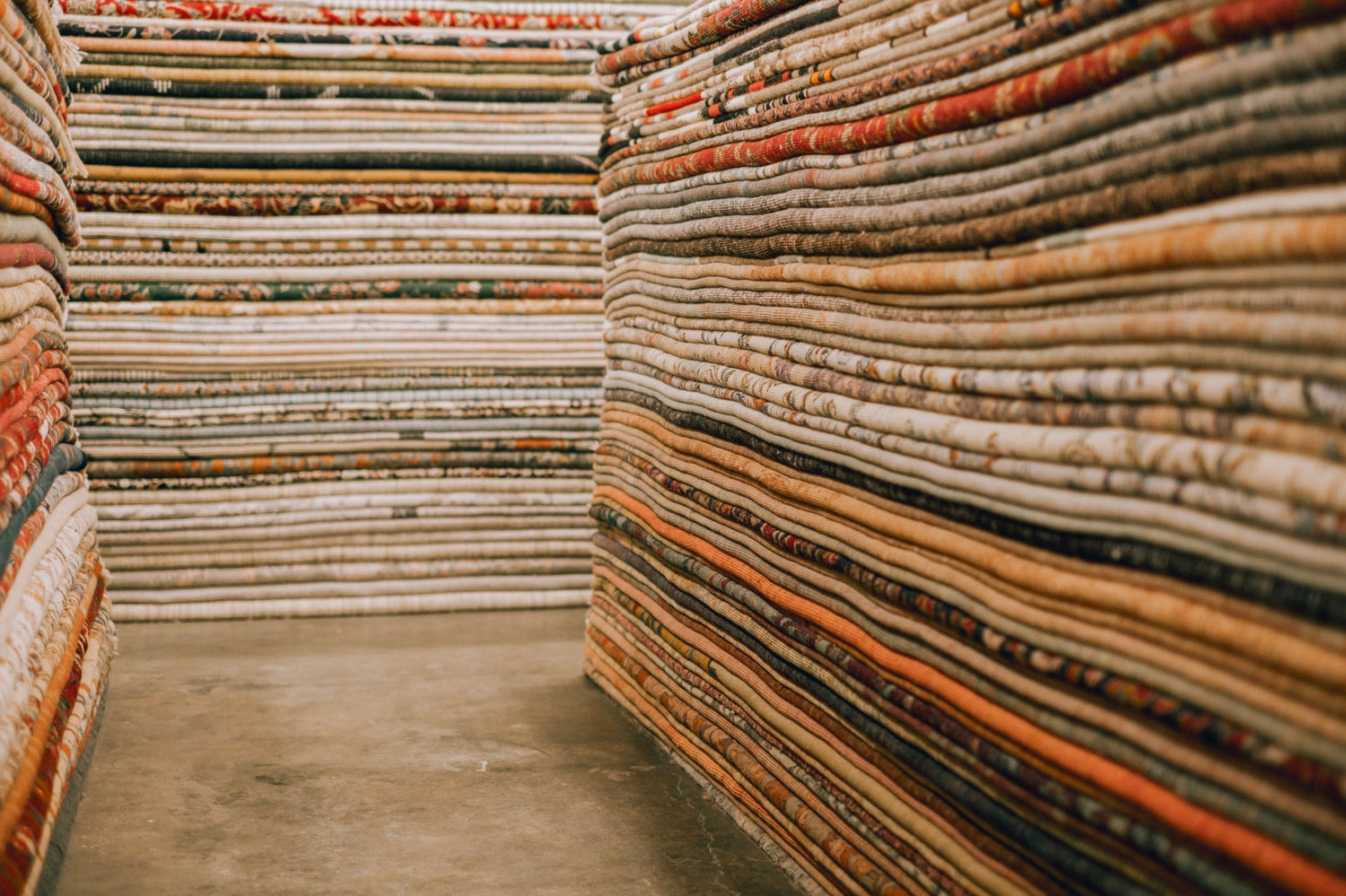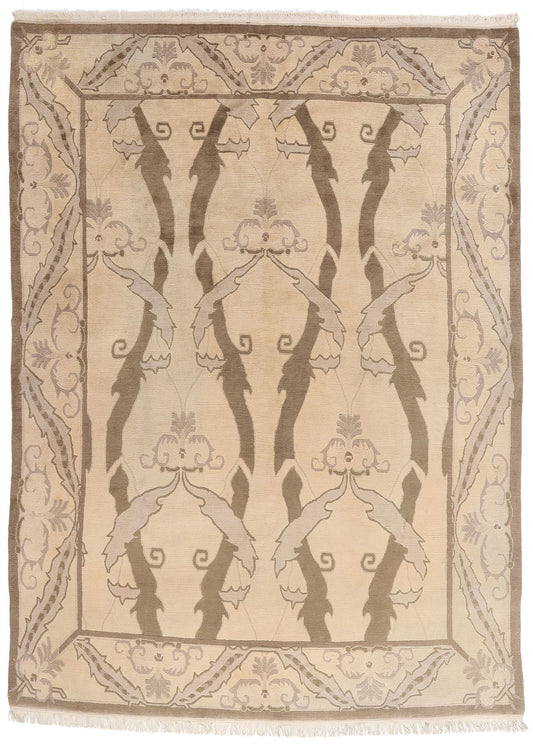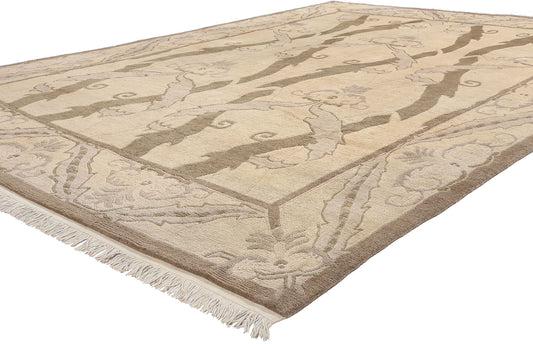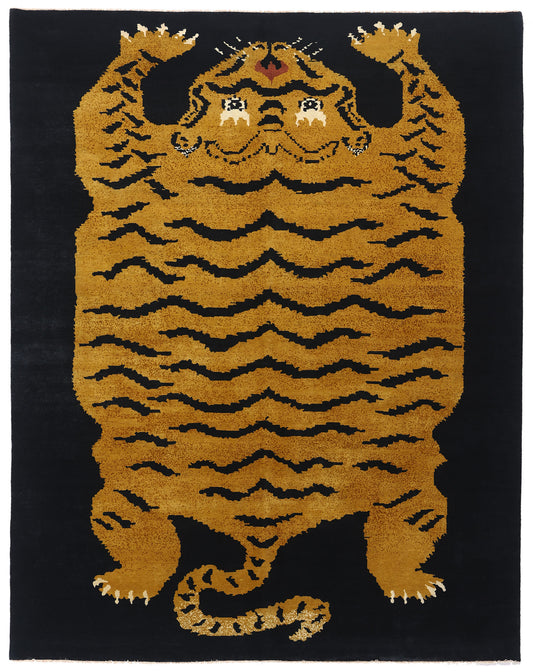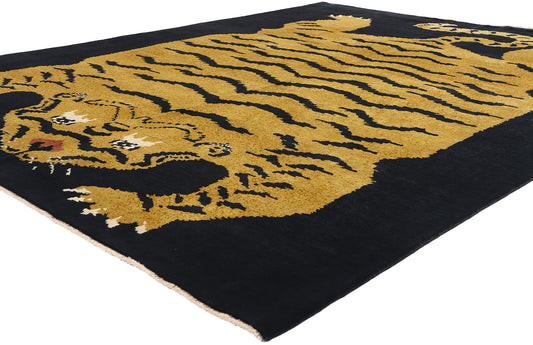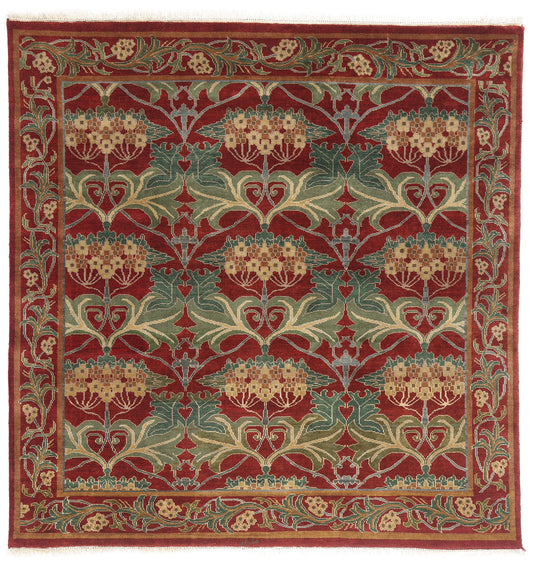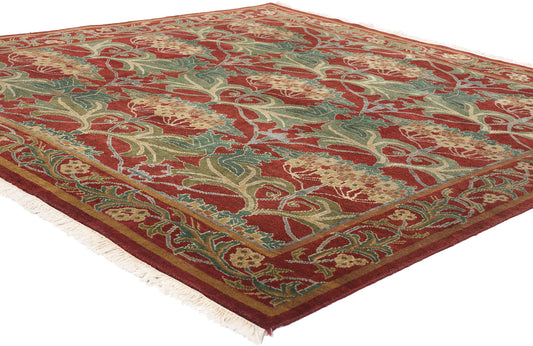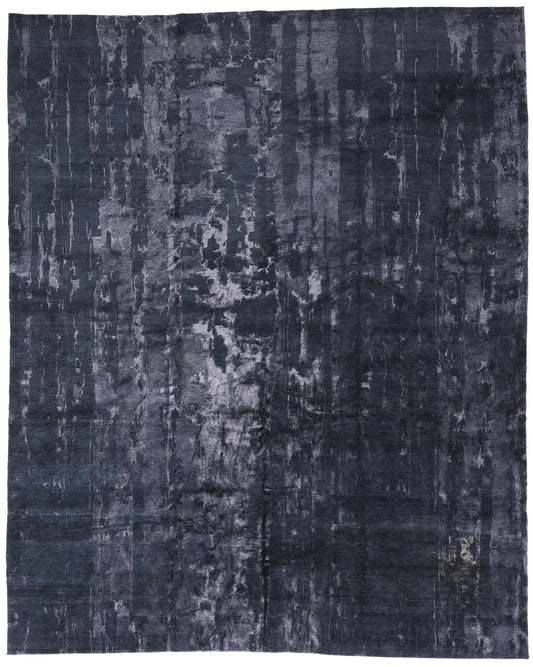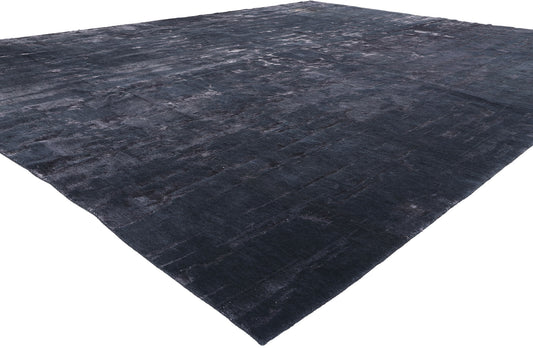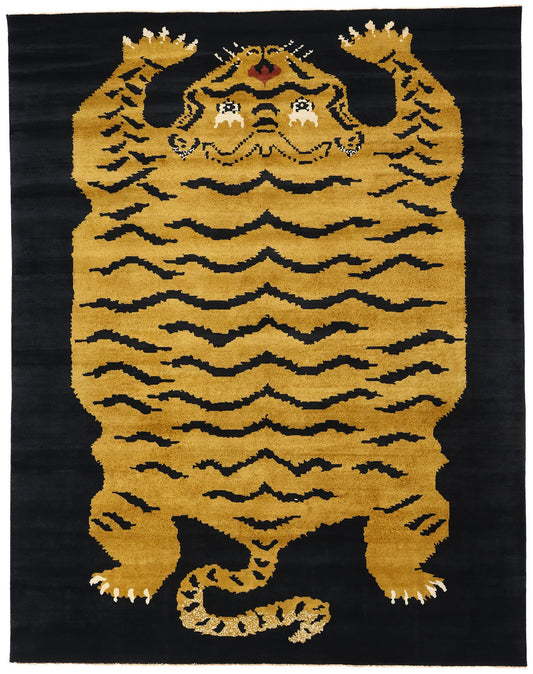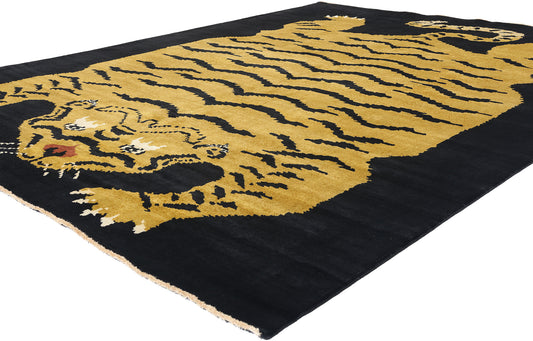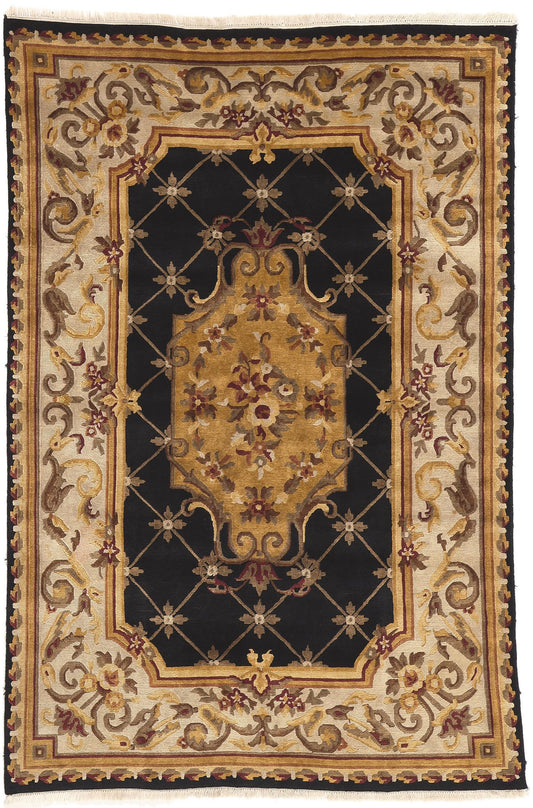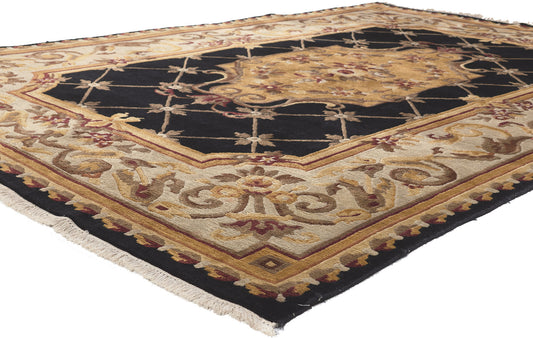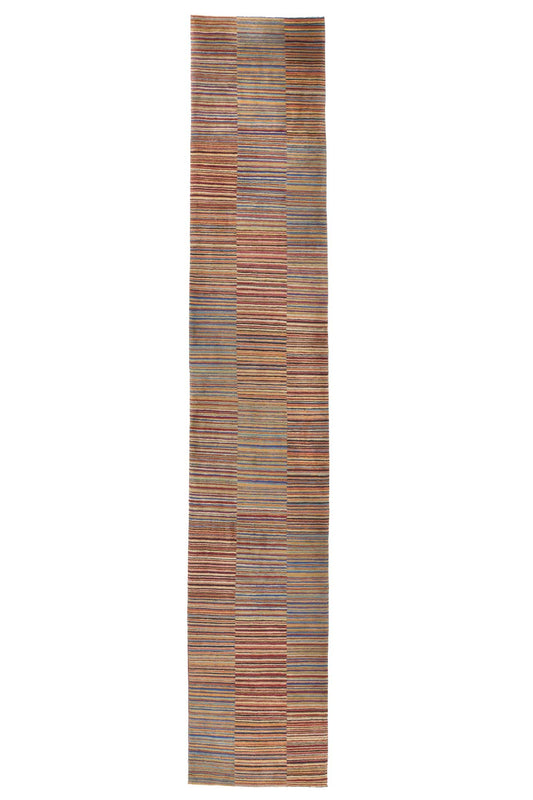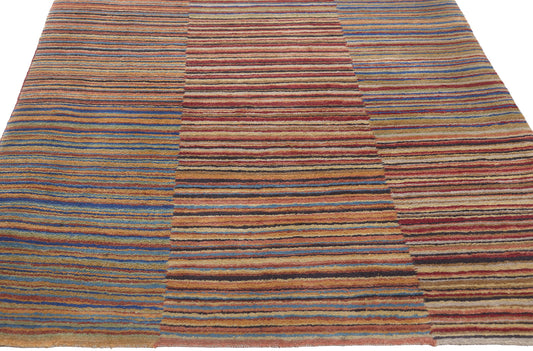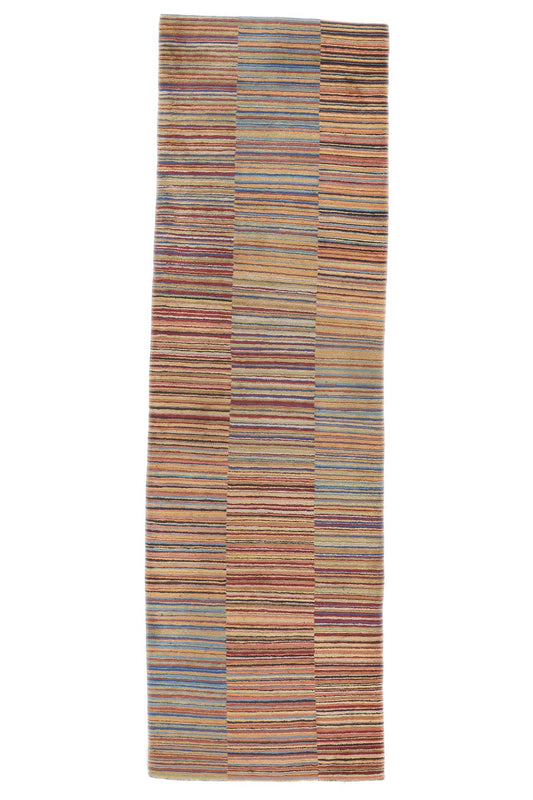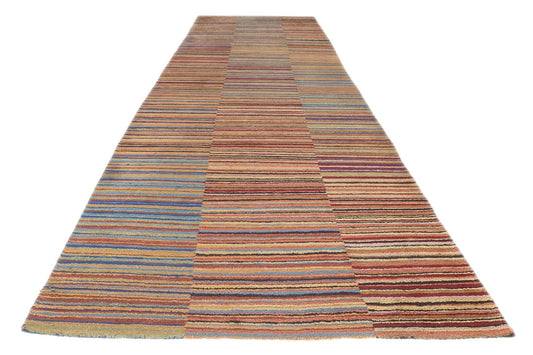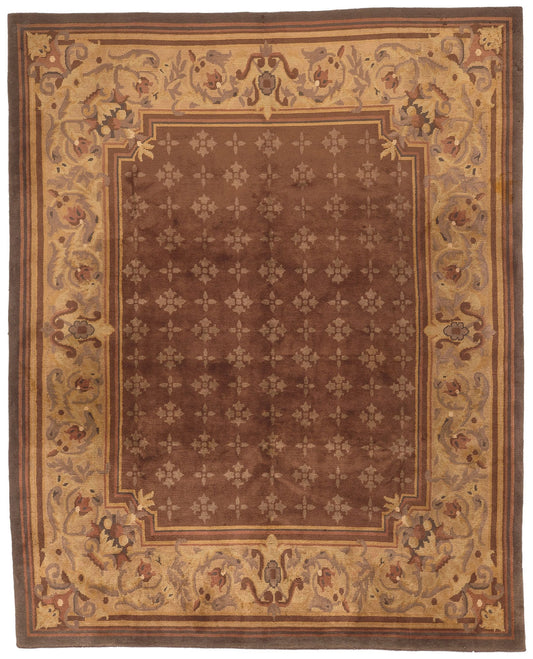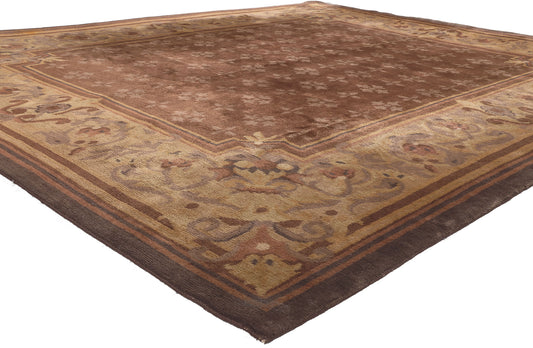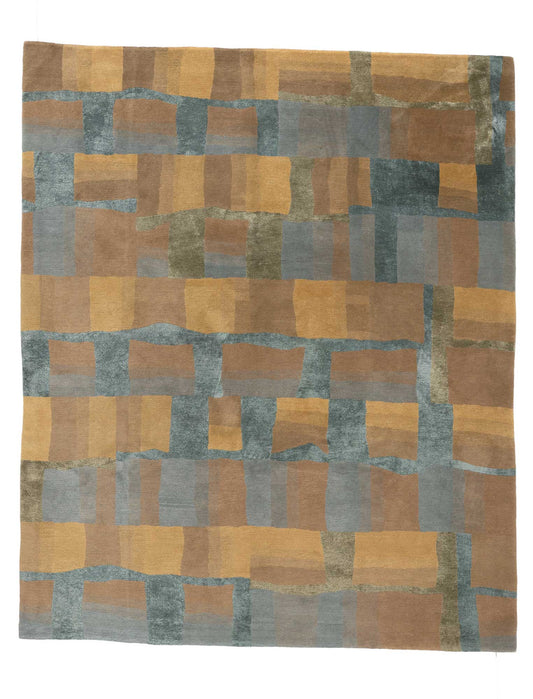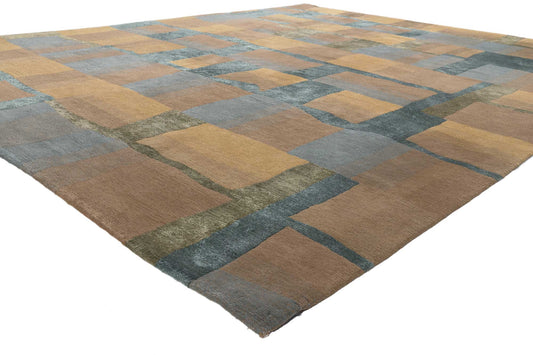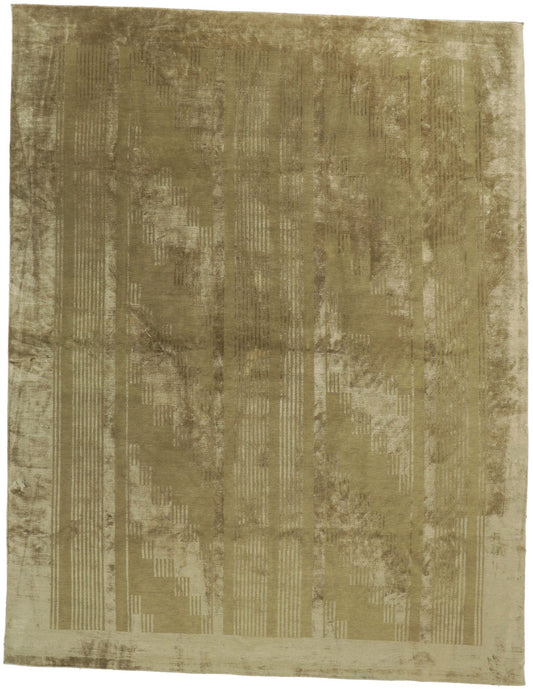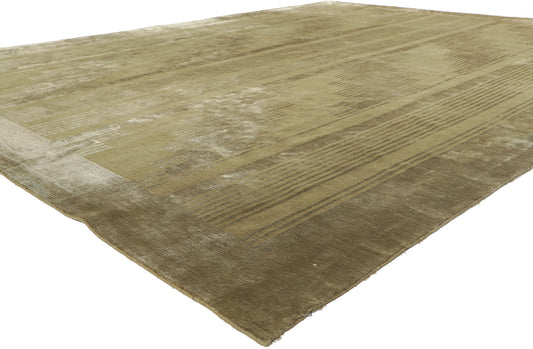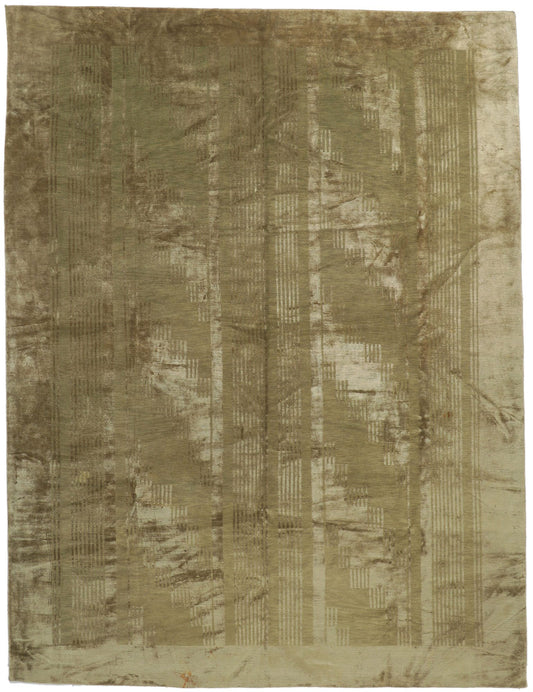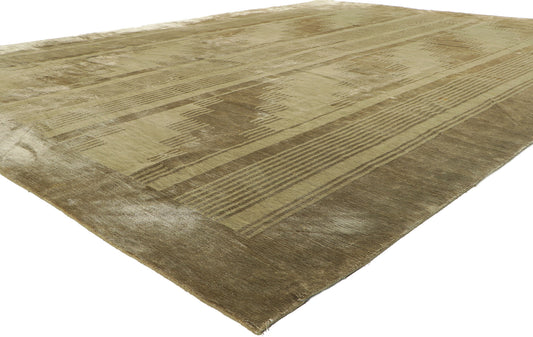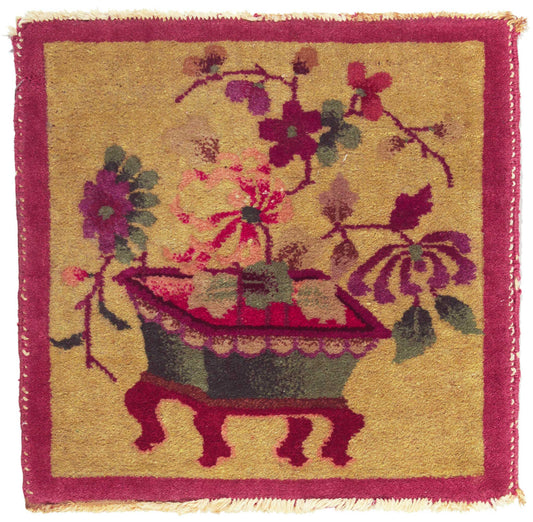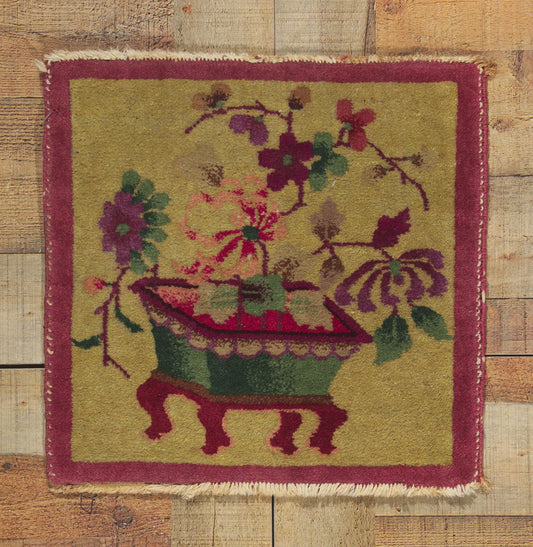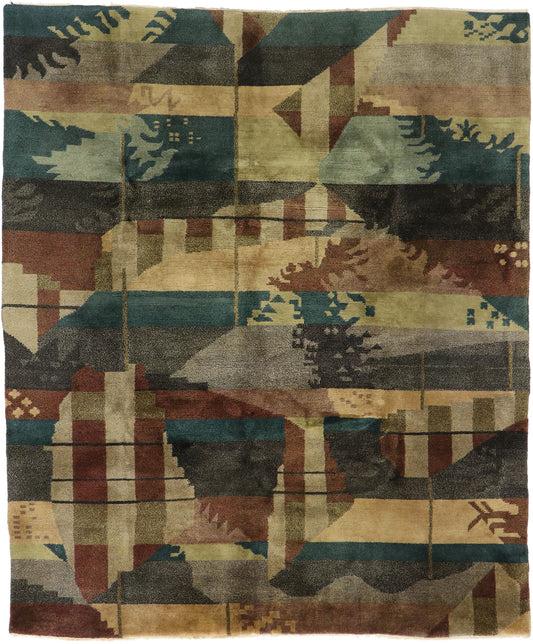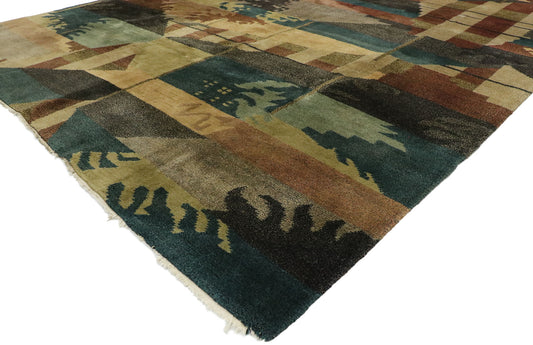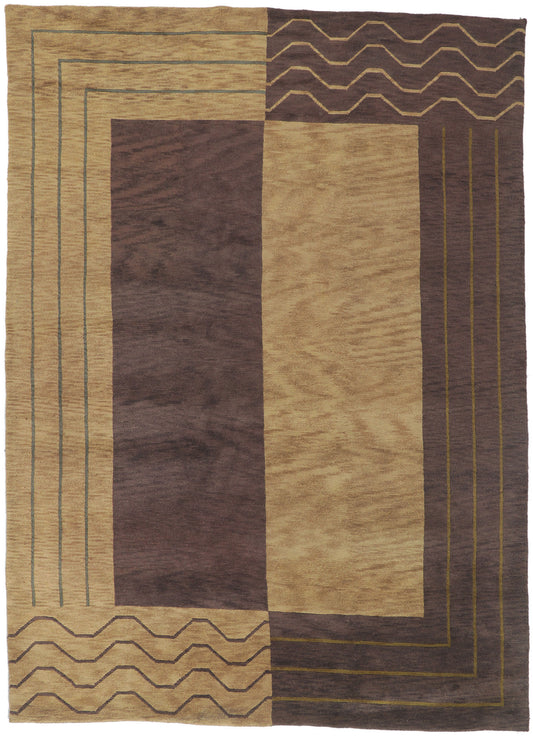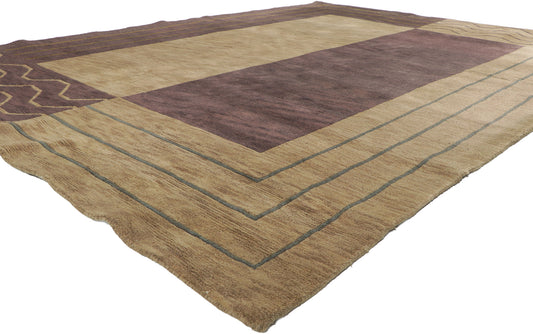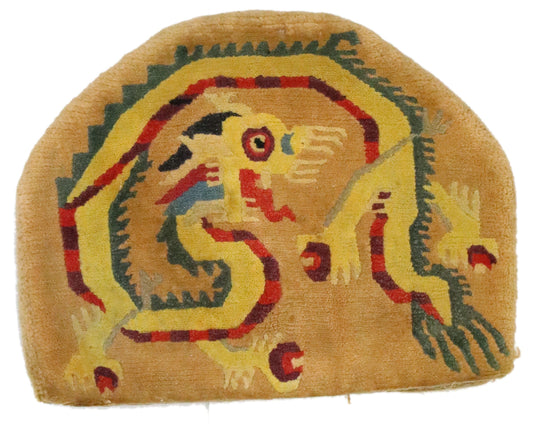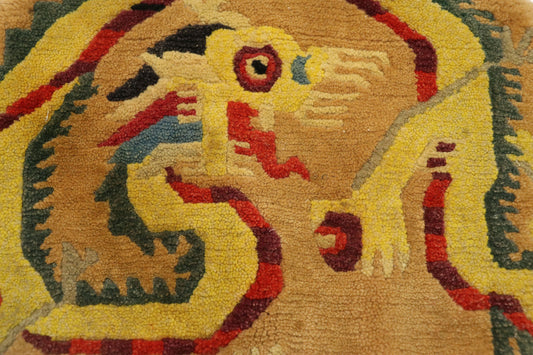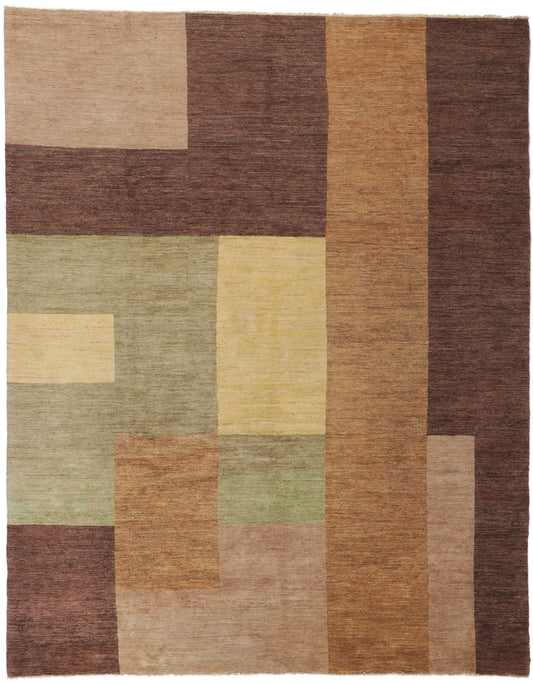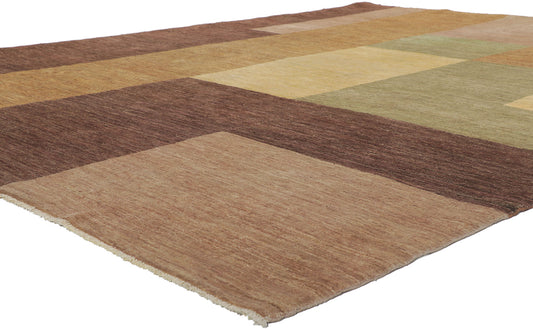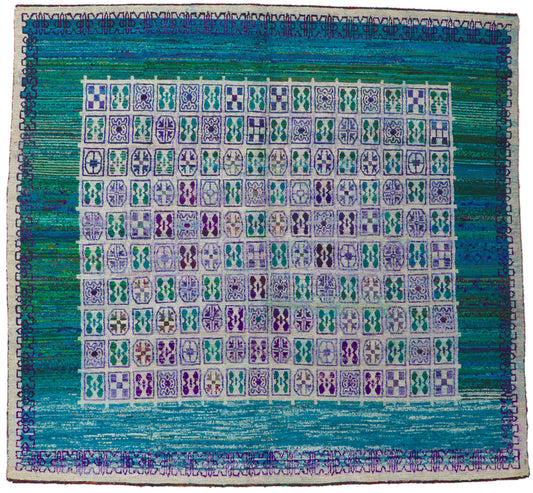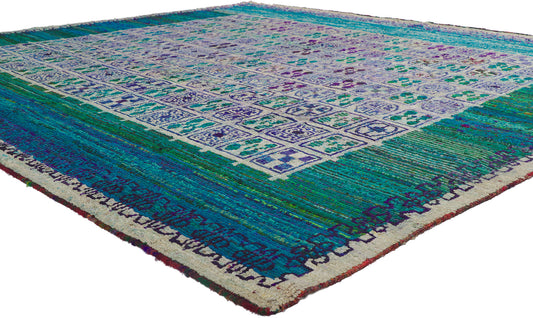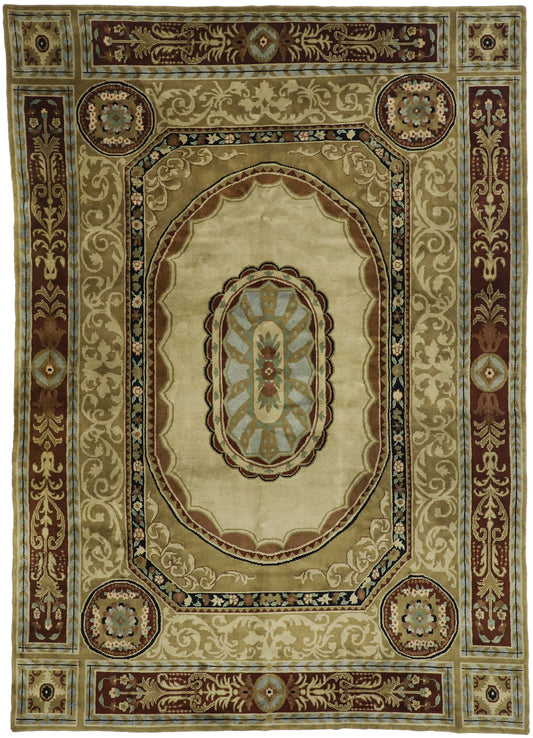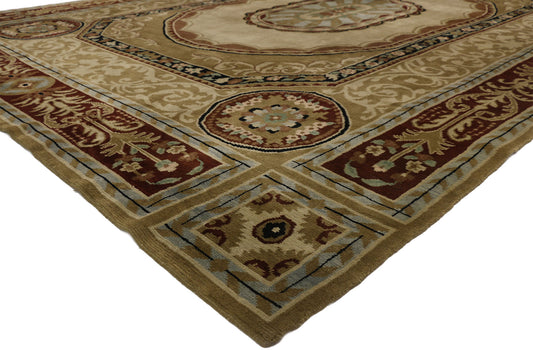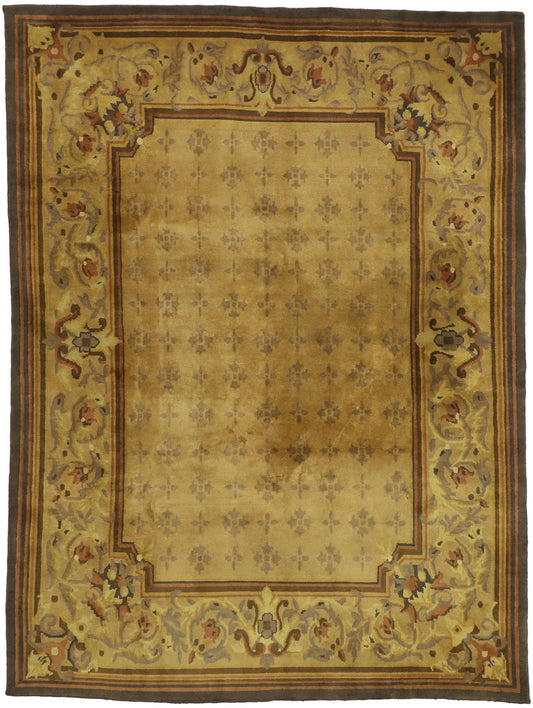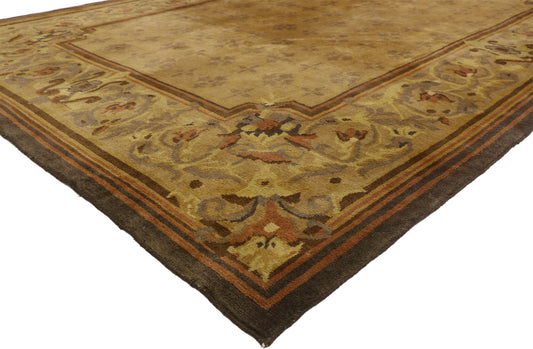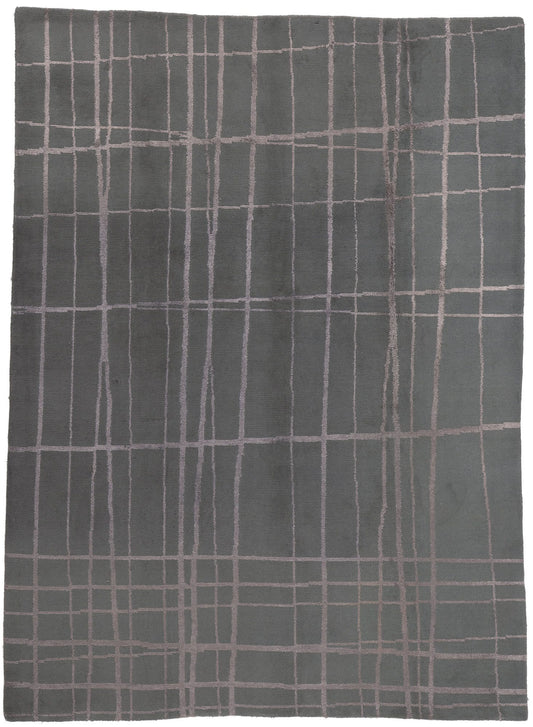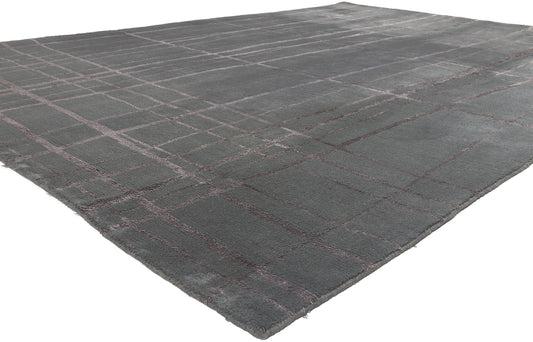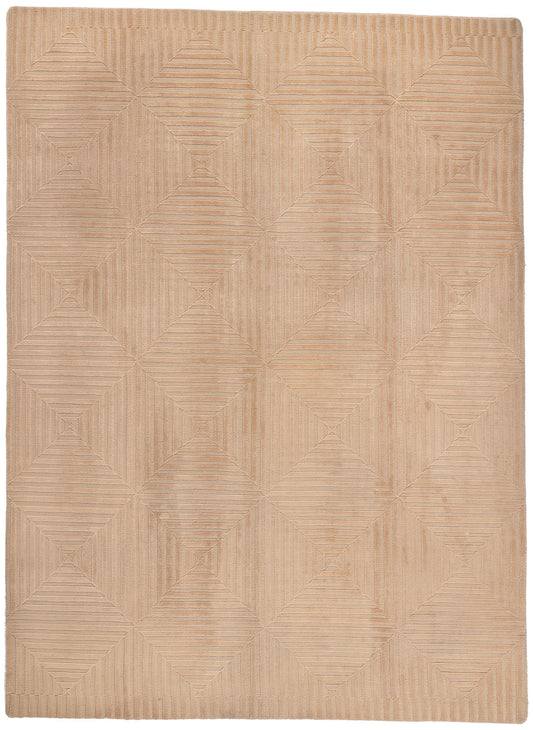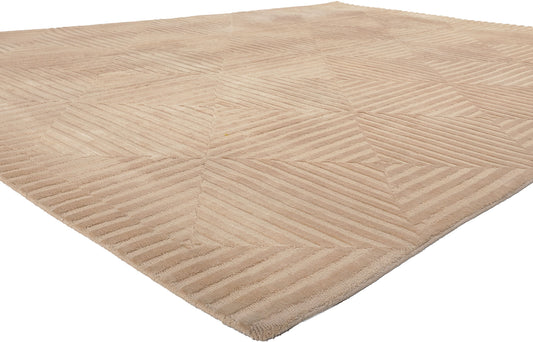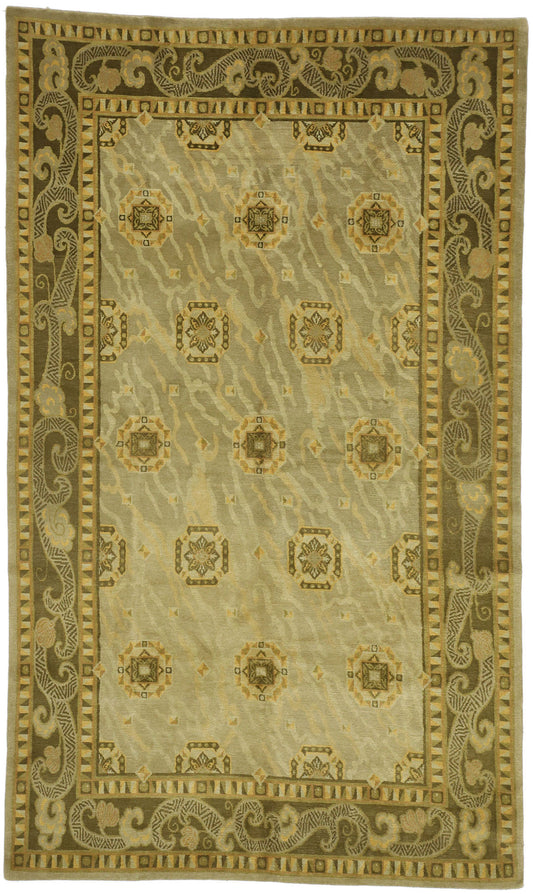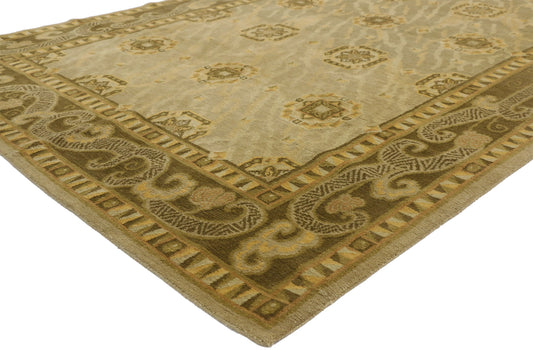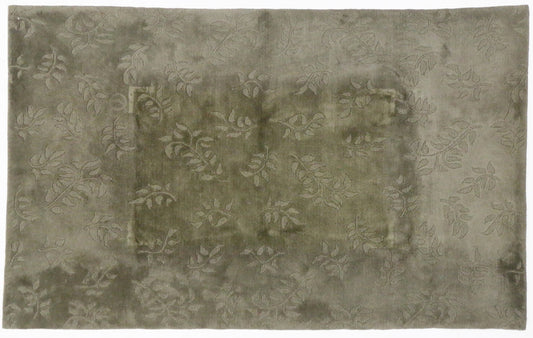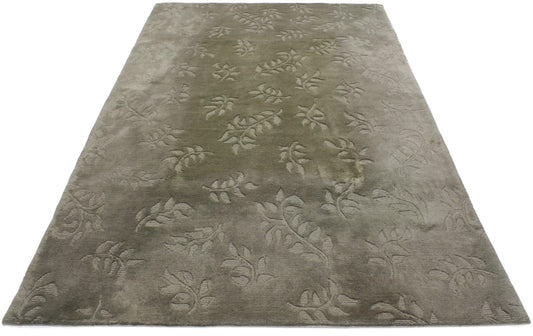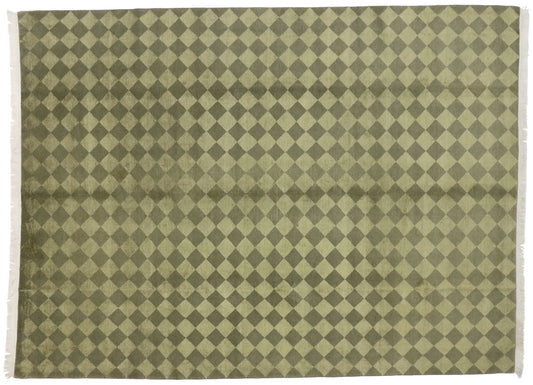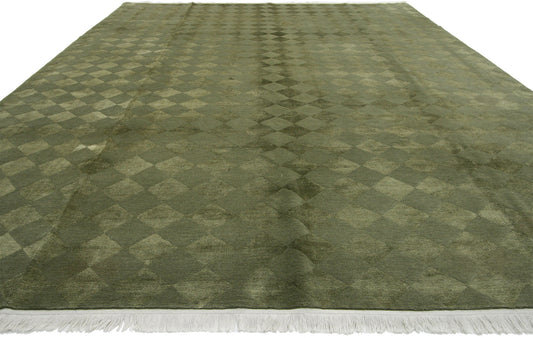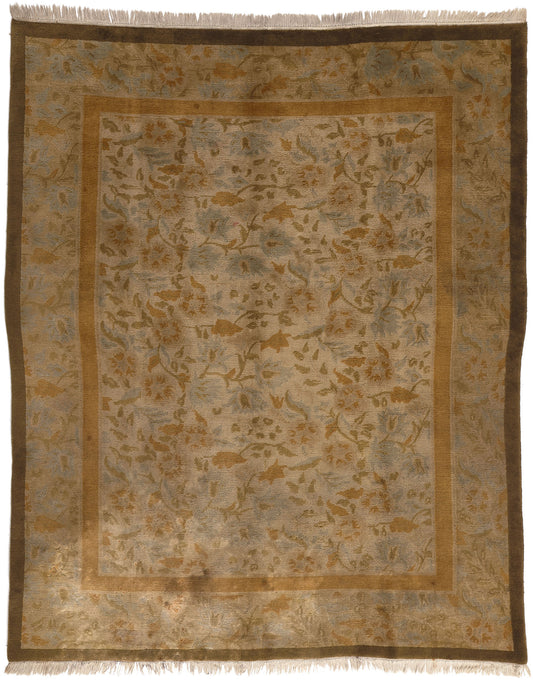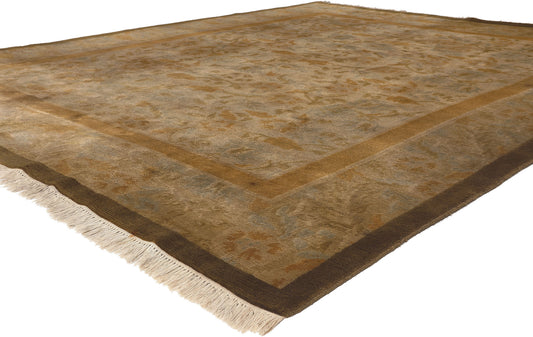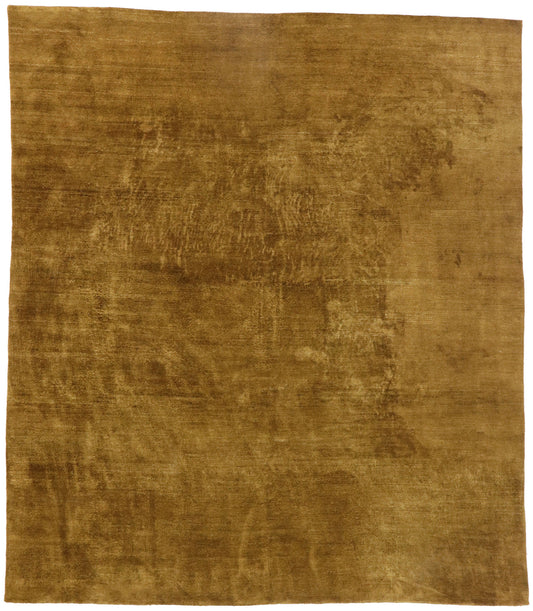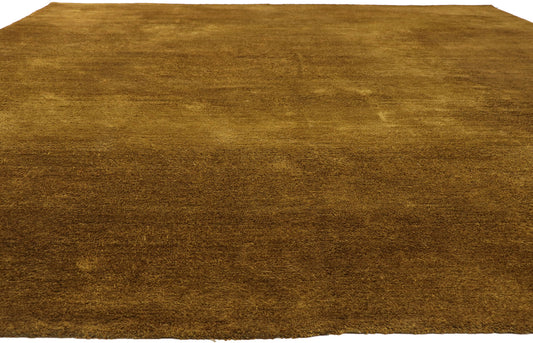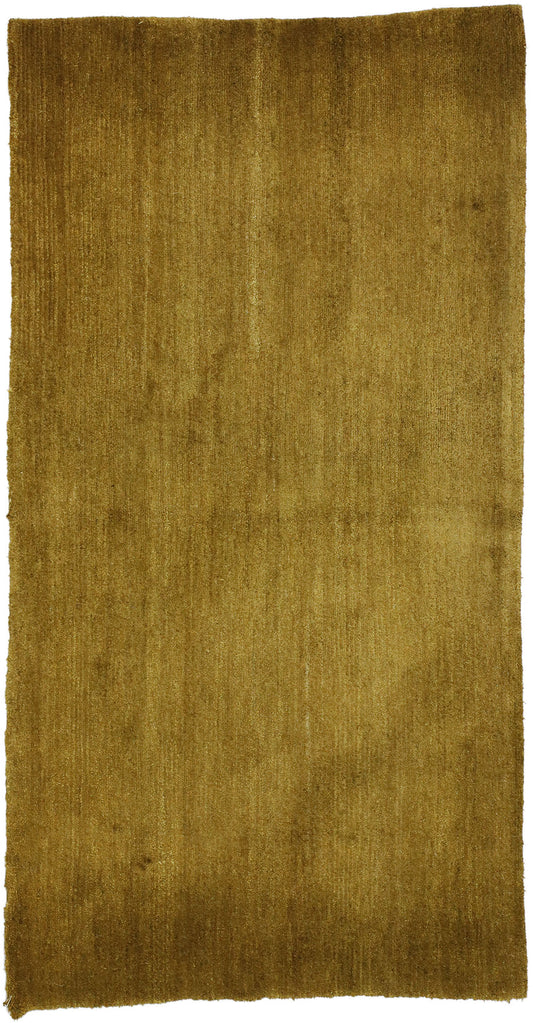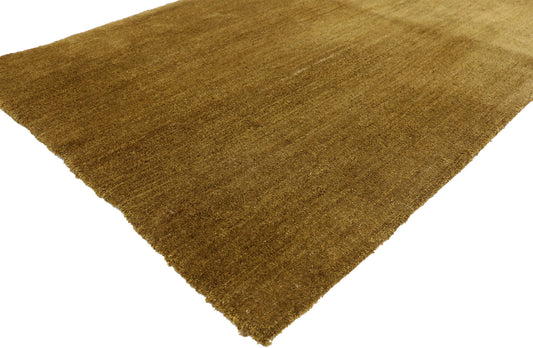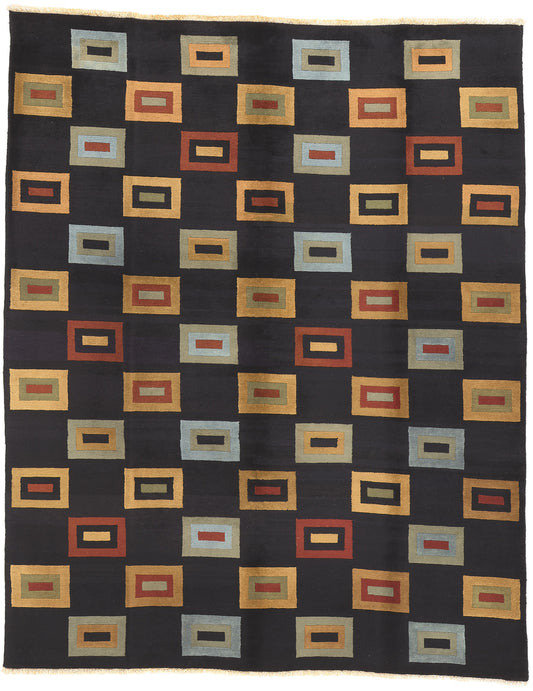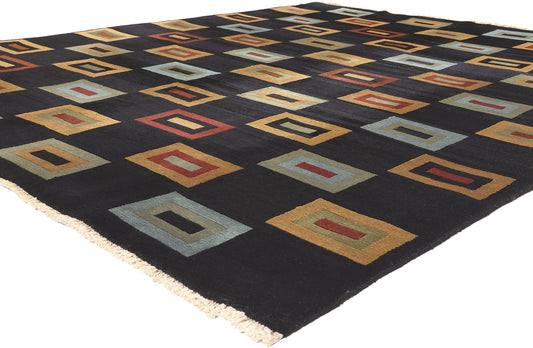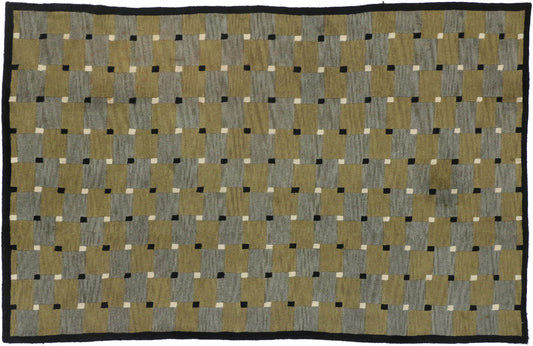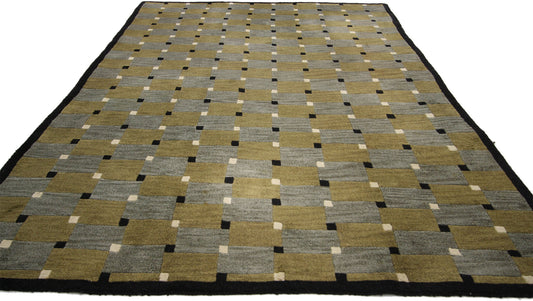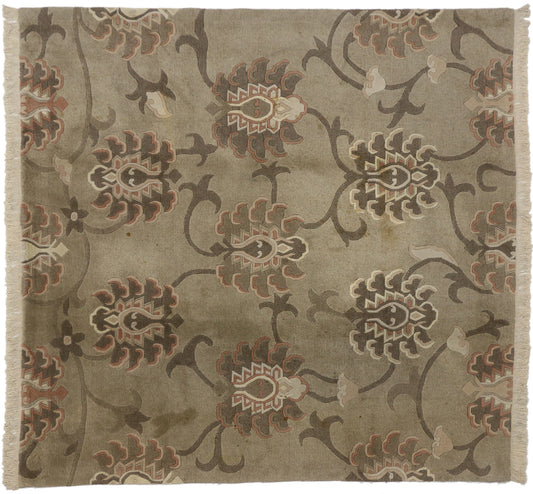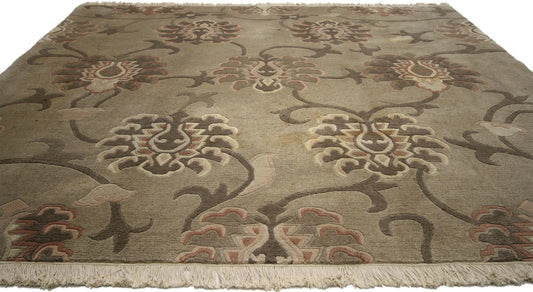Explore the Timeless Beauty of Vintage Tibetan Rugs from Nepal
If you're passionate about the world of Oriental rugs and captivated
by the artistry of centuries past, our collection of vintage Tibetan
rugs from Nepal will surely enchant you. Crafted with meticulous care
and a touch of historical richness, these rugs are not just floor
coverings; they're works of art that have stood the test of time.
Tibetan rugs are known for their bold colors and large patterns. They
are typically made from wool, cotton, or silk and are often used in
high-traffic areas due to their durability. Traditional Tibetan rugs
often feature dragons, other animals, mythical beings, floral designs,
and Buddhist symbols. Tibetan rugs are usually hand-woven, which
increases their durability.
Tibetan Rugs: A Journey Through Tradition and Craftsmanship
Origins of Tibetan Rugs: The art of Tibetan rug-making dates back
centuries, and the tradition is still thriving in the heart of Nepal.
Artisans use the finest Highland sheep wool, locally known as
'changpel,' to create these magnificent rugs. Known for their lustrous
sheen and exceptional durability, these rugs are a testament to the
enduring craftsmanship of the Tibetan people.
Vivid Color Palette: What sets Tibetan rugs apart is their vibrant
color palette. Warm golds, rust reds, deep blues, rich oranges, and
earthy browns come together to create a visual symphony. The dyes used
are derived from plants that flourish in the elevated Tibetan plateaus,
producing exquisite shades of yellow, red, brown, gray, and blue.
Versatility in Use: Originally, Tibetan rugs served multiple
purposes, from yak and horse saddle rugs to wall hangings and floor
coverings. Specialized seating carpets called 'khadens' were also
created, reflecting the adaptability and ingenuity of the Tibetan
weavers.
The Allure of Gau Motifs in Tibetan Rugs
One distinctive feature of Tibetan rugs is the presence of gau
motifs. These motifs are inspired by 'gaus,' which are metallic Tibetan
Buddhist prayer boxes or amulet containers. Traditionally worn as
jewelry, these intricate gaus could be likened to African mojo bags or
charm vials worn by South American Indians. Gaus featured in Tibetan
rugs are often adorned with semiprecious stones or pieces of coral,
adding a touch of mystique and spirituality to the designs.
Tibetan Tiger Rugs: A Symbol of Power and Elegance
Among the prized possessions in the world of Oriental rugs are
Tibetan tiger rugs. These magnificent pieces often depict stylized,
fire-breathing dragons and mythical snow tigers, gracefully moving under
beautifully rendered clouds. They also incorporate ethereal Tantric
Buddhist motifs and elegant lotus blossoms.
The origins of these designs can be traced back to ancient India,
where yoga practitioners known as yogins knelt on genuine tiger skins
for meditation and prayer. Revered as a symbol of tremendous power,
Tibetan tiger rugs were highly sought after by Tibetan kings, high
lamas, and tribal chiefs. These rugs capture the essence of spirituality
and strength.
A Glimpse into Modern Tibetan Rug Production
The modern history of Tibetan rugs is marked by resilience and
creativity. More than half a century ago, when Tibet was invaded by
China, millions of Tibetans were forced to flee, seeking refuge over the
Himalayan Mountains. Many of these displaced Tibetans found solace in
the Kathmandu Valley of Nepal.
Under the guidance and support of the Swiss government, Tibetan
refugees established a rug-weaving cottage industry. Initially, small
rugs were woven, catering to Nepal's tourists. However, during the
1970s, the allure of Tibetan rugs captured the hearts of German
tourists, leading to a surge in demand. Within a decade, Tibetan rug
production in Nepal reached new heights, establishing itself as a
prominent industry.
Vintage Tibetan rug enthusiasts emphasize that the artistry and
quality of rugs made by Tibetan refugees in Nepal far surpass those
created in India or other countries. The genuine Highland sheep wool and
the unwavering commitment to traditional techniques make these rugs
truly exceptional.
Things to know about Tibetan rugs:
What are Tibetan rugs made of?
Tibetan rugs are typically crafted using high-quality materials,
including Himalayan sheep wool and silk. These natural fibers provide
durability, softness, and a luxurious texture. The wool used is often
known as "changpel," which is prized for its lustrous sheen.
What are the symbols on Tibetan rugs?
Tibetan rugs often feature a variety of symbolic motifs and designs,
including mandalas, lotus flowers, dragons, geometric patterns, and gau
motifs. These symbols can carry cultural, spiritual, or historical
significance and are often inspired by Tibetan and Himalayan traditions.
What are the characteristics of Tibetan rugs?
Characteristics of Tibetan rugs include a vivid color palette with
warm golds, rust reds, deep blues, rich oranges, and earthy browns. They
are known for their intricate designs, hand-woven craftsmanship, use of
the Tibetan knotting technique, and a sheen on the wool. These rugs are
often versatile in use, from floor coverings to wall hangings.
What are the best Tibetan rugs?
The "best" Tibetan rugs can vary depending on personal preferences,
quality, and design. Factors to consider when determining the best
Tibetan rug include the type of wool used, knot count (higher knot
counts often indicate better quality), design, and whether it aligns
with your aesthetic and intended use.
What is the significance of the Tiger rug?
Tiger rugs are highly prized in Tibetan culture and often depict
stylized, fire-breathing dragons and mythical snow tigers. These rugs
are symbols of tremendous power and are associated with Tibetan kings,
high lamas, and tribal chiefs. They also have spiritual and cultural
significance, particularly in Tantric Buddhist traditions.
Are Tibetan rugs good quality?
Tibetan rugs are generally considered of high quality due to their
skilled craftsmanship, the use of natural materials like Himalayan sheep
wool and silk, and traditional weaving techniques. However, the quality
can vary depending on factors such as the specific manufacturer, knot
count, and design.
How can I tell if my rug is a real Tibetan rug?
To determine if a rug is a genuine Tibetan rug, you can consider the following factors:
- Materials: Look for the use of natural materials, such as Himalayan sheep wool and silk.
- Knotting Technique: Tibetan rugs typically use the Tibetan knotting technique, which is distinct from other weaving methods.
- Design: Tibetan rugs often feature traditional Tibetan and Himalayan motifs, so familiarize yourself with these designs.
- Origin:
Consider the rug's origin; genuine Tibetan rugs often come from Nepal,
the Tibetan regions, or areas influenced by Tibetan culture.
Esmaili's Collection of Vintage Tibetan Rugs: A World of Elegance Awaits
As you dive into the captivating world of Tibetan rugs, you'll
discover a wealth of history and artistry that is as rich as the rugs
themselves. At Esmaili Rugs, we're proud to offer you a carefully
curated collection of vintage Tibetan rugs that speak to the heart of
this tradition.
Whether you're an experienced collector or someone discovering the
beauty of Tibetan rugs for the first time, our selection will leave you
inspired. Feel free to explore our vintage Tibetan rugs collection
online or call us at 214-651-7847. We're here to assist you in finding
the perfect piece that resonates with your unique style and preferences.
When you choose an Esmaili rug, you're not just investing in a rug;
you're acquiring a piece of history and art that will adorn your home
for generations to come. Explore the beauty and tradition of Tibetan
rugs with us today.

